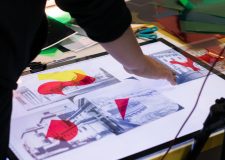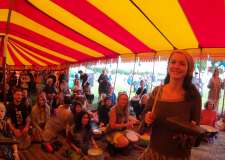Brighton professor wants burns victims to be able to heal themselves
A newly appointed professor at Brighton University wants burns victims to be able to heal themselves.
Anthony Metcalfe is leading a team of scientists hoping to find ways to help burns victims regenerate new nerves and skin and leave minimal disfiguring scars.
Professor Metcalfe believes that humans at one time had this ability – just as the liver today can regenerate after injury – but it was lost over time.
Researchers are now looking into ways to restart the process – and it is just one of Professor Metcalfe’s ambitions.
The international burns injuries expert has just taken up the post of professor of burns and wounds at the Brighton University and director of research at the Blond McIndoe Research Foundation.
The foundation is based at the Queen Victoria Hospital in East Grinstead where the Sir Archibald McIndoe pioneered treatments for Second World War burns victims. His patients formed the famous Guinea Pig Club.
Professor Metcalfe said: “The idea that humans once had the ability to regenerate skin comes from the notion that there are organs in the human body that can regenerate, like the liver.”
He said that modern wounds from sharp objects, suffered in such incidents as car accidents and from surgery, were not previously experienced in nature.
Today’s injuries are treated in clean sterile environments which often lead to rapid healing and subsequent scarring.
He said: “The idea would be to try to create an environment in and around the wound for the regenerative mechanisms to be encouraged to occur, hopefully reducing scarring in the process.”
Professor Metcalfe will work with colleagues in the School of Pharmacy and Biomolecular Sciences and other Brighton University departments to develop new techniques and approaches in regenerative medicine to improve the treatments.
He said “My role has been created to formalise, develop and promote the research partnership with the Blond McIndoe Research Foundation.
“We live in exciting times for interdisciplinary science, especially in the fields of burns, plastic and reconstructive surgery, wound healing, regenerative medicine and tissue engineering.
“The unique research endeavours that can be made under this exciting partnership will revolutionise potential therapies for wound healing, for reduction of scarring and restoration of normal tissue architecture for patients suffering from burns and other tissue injuries.”
Professor Metcalfe said that they would be building on Sir Archibald McIndoe’s pioneering work: “We intend to take hold of his legacy and, using modern regenerative medicine techniques, develop new approaches to scar reduction in burns and wound healing and develop techniques to regenerate skin.
“As an innovator himself, Sir Archibald developed the groundwork of modern plastic surgery techniques and was probably one of the first clinicians to see the power of interdisciplinary approaches.
“Extensive burns injuries and the subsequent scarring that occurs creates not only physical problems for the patients, often requiring continued surgery, but there is a psychological impact that Sir Archibald recognised.
“We want to develop the holistic approach that he pioneered, using patient participatory research programmes, to gain a much better understanding of the impact of such injuries to patient’s lifestyles.”




















